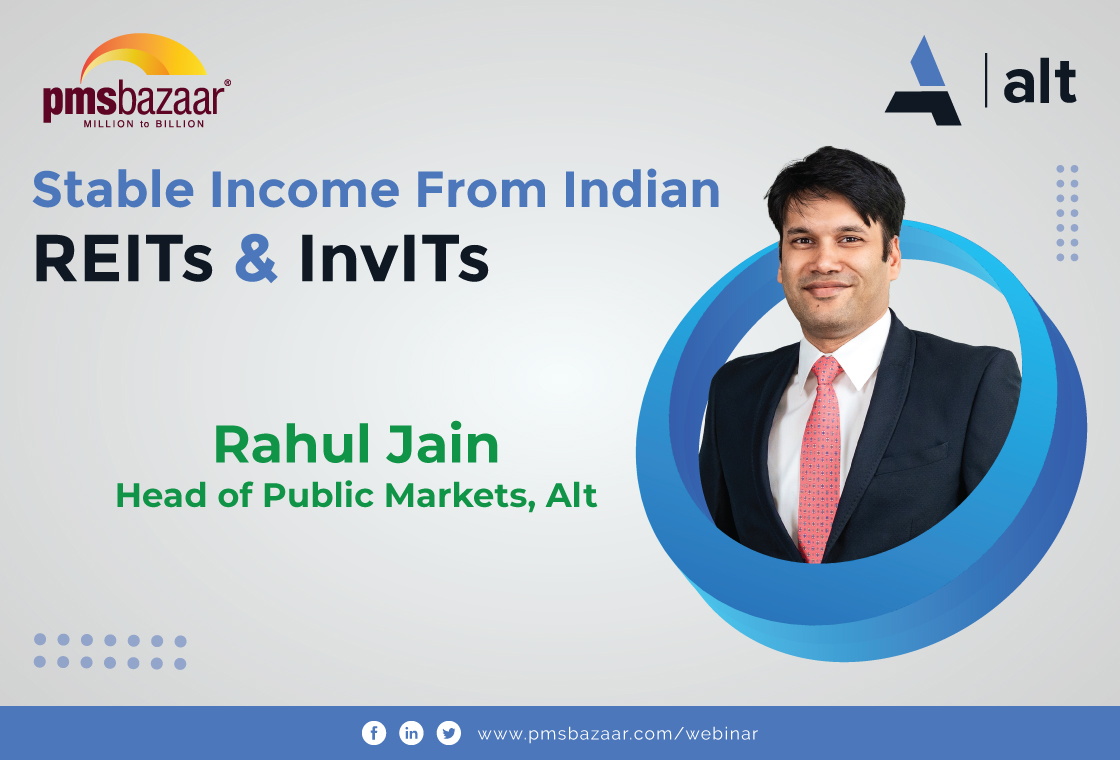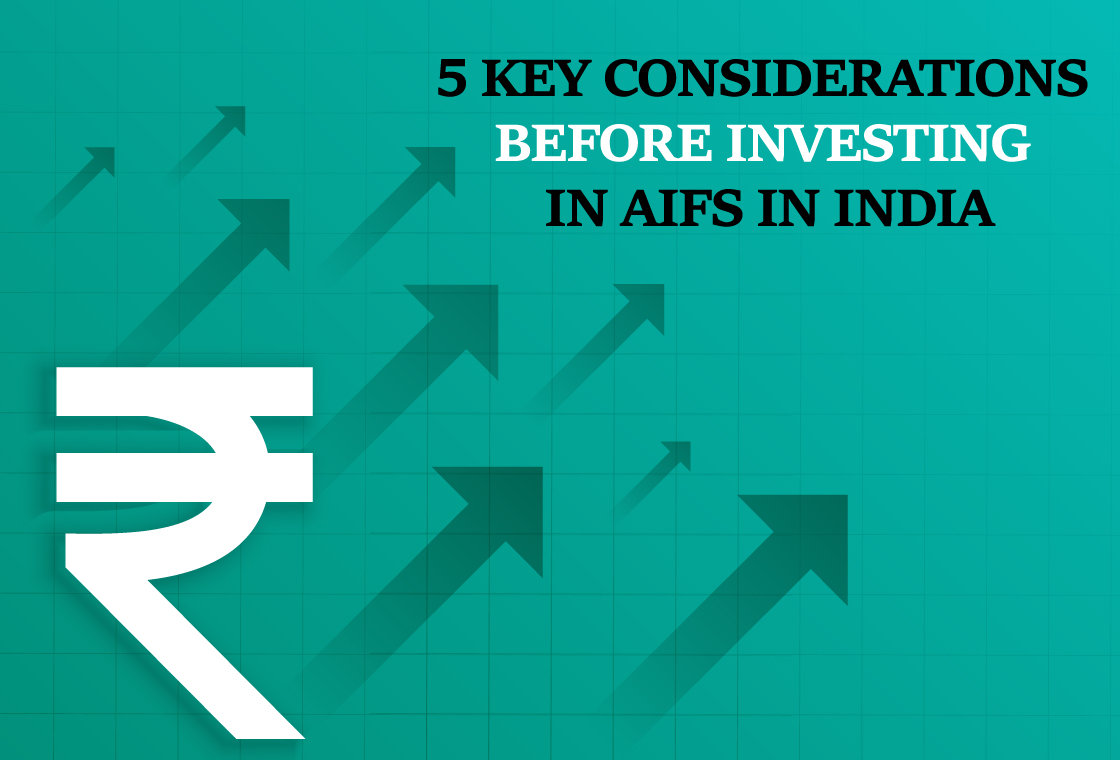PMS Bazaar recently organized a webinar titled “Debt AIFs vs Equity: The Shift That’s Transforming Investment Strategies,” which featured Mr. Amit Kansal, Head, Alternate Investments (Fixed Income), Aditya Birla Sun Life AMC. This blog covers the important points shared in this insightful webinar.

The webinar blog covers insights from Mr. Kansal, which included the shift from equity to debt amid market volatility, private credit's resilience, sector growth, regulatory changes, and ABSL’s investment strategies. They explored risk management, deal evaluation, and the evolving private credit landscape, emphasizing capital preservation, liquidity, and innovative debt structures tailored to investor needs
Key aspects covered in this webinar blog are
- The impact of global economic policies
- The flight to safety: developed markets and dollar assets
- The reassessment of debt allocations
- Private credit performance during market downturns
- The evolution of investor preferences in private credit
- The size and growth potential of the private credit market
- Evaluating creditworthiness below A-rated companies
- Regulatory changes and the future of private credit
- Managing risk and liquidating investments
- Sectors on the negative list: EPC, trading, and gems & jewelry
Summary: Mr. Amit Kansal discussed the shift from equity to debt amid market volatility. Mr. Kansal highlighted global economic policies, investor preference for safer assets, and the growth of private credit. He detailed ABSL’s investment approach, focusing on governance, cash flow, and collateral. He addressed regulatory changes, risk management, and sector preferences. ABSL prioritizes capital preservation, innovative debt structures, and due diligence, ensuring stability and tailored investment options for diverse investor needs in the evolving financial landscape.
The Impact of Global Economic Policies
Mr. Kansal began by stating that recent global economic policies had significantly altered the market landscape. He pointed out that the increasing protectionist agenda had led to heightened uncertainty, resulting in market upheaval. He explained that uncertainty typically correlates with increased volatility, prompting investors to seek safer investment avenues.
The Flight to Safety: Developed Markets and Dollar Assets
He elaborated that investors, in their pursuit of safety, often redirected funds from emerging markets to developed economies. He also mentioned that the dollar, perceived as a safe haven, further accentuated this shift. Additionally, he noted the rise in bullion, particularly gold, as a hedge against uncertainty and inflation.
The Reassessment of Debt Allocations
Mr. Kansal highlighted that the increased volatility had led to a reassessment of portfolio allocations, with investors favoring debt instruments. He described debt as a risk-averse, fixed-income product, providing regular income, and thus, a safe haven during turbulent times. He characterized this shift as a course correction, with portfolios previously skewed towards equity now being rebalanced to include more debt.
Private Credit Performance During Market Downturns
When inquired about the performance of private credit during previous market downturns such as the COVID-19 pandemic and the Ukraine-Russia conflict, Mr. Kansal responded by emphasizing the stability of private credit. He stated that unlike equity markets, which experienced significant drawdowns, private credit demonstrated consistent returns without substantial principal erosion. He highlighted the consistent 15-17% returns of private credit over the past decade, even during periods of high market volatility.
The Evolution of Investor Preferences in Private Credit
Responding to a question on how investor preferences towards private credit had changed over the last decade, Mr. Kansal explained that the global financial crisis of 2008 had propelled private credit into prominence globally. In the Indian context, he noted that the IL&FS crisis and subsequent banking sector issues in 2018 served as a similar catalyst. He also cited the regulatory changes, such as the Insolvency and Bankruptcy Code (IBC), as significant enablers for the growth of private credit in India.
The Size and Growth Potential of the Private Credit Market
Addressing the size of the private credit industry in India and globally, and the gaps that existed, Mr. Kansal revealed that the global private credit market had reached $2.5 trillion, while the Indian market was still in its nascent stage, valued at $15-20 billion. He expressed confidence in the significant growth potential of the Indian market, estimating it could reach $50 billion in the next two to three years.
The Approach to Deal Evaluation
Mr. Kansal then outlined the firm's four-pillar approach, specifically how ABSL approaches potential deals, emphasizing character, capacity, cash flows, and collateral. He explained that they prioritize corporate governance, financial stability, strong cash flows, and adequate collateral coverage. He also mentioned that they prefer asset-heavy industries such as manufacturing, infrastructure, and chemicals.
Evaluating Creditworthiness Below A-Rated Companies
Addressing the evaluation of creditworthiness, particularly for companies rated below A, Mr. Kansal explained that as fund managers, they prioritize cash flows, debt-to-equity ratios, and the resourcefulness of the promoter group. He also mentioned the importance of analyzing collateral liquidity and marketability. He further discussed how investor's evaluation of the investment is dependant on their own investment philosophy, risk tolerance, and return expectations.
Regulatory Changes and the Future of Private Credit
When asked about the recent regulatory changes by SEBI, particularly regarding the allocation between listed and unlisted debt securities, Mr. Kansal clarified that SEBI had provided an enabling provision to allow for increased investment in listed debt, particularly those rated A and above. He emphasized that this change did not fundamentally alter the nature of the private credit market, which thrives on customized and bespoke instruments.
Regulatory Flexibility and Market Opportunities
Mr. Kansal clarified that SEBI's recent discussions regarding listed debt were more about enabling flexibility for fund managers. He emphasized that listing, in itself, did not alter the fundamental nature of private credit, which thrived on customized instruments. He explained that the provision allowed fund managers to pursue otherwise good deals that might require listed NCDs, ensuring they did not inadvertently breach regulatory guidelines.
The Complementary Roles of Bond and Private Credit Markets
In response to a question about the relationship between bond markets and private credit, Mr. Kansal asserted that private credit was deepening, not crowding out, the bond market. He highlighted the asymmetry in the bond market, where issuances were predominantly AAA-rated, leaving a gap for double-A and lower-rated issuances. He argued that private credit was filling this void, offering a wider range of investment options.
Addressing Data Scarcity and Due Diligence
Regarding the challenge of data scarcity in Indian companies, Mr. Kansal detailed ABSL's approach to due diligence. He explained that they utilized third-party due diligence, including financial and legal assessments by reputable firms. For unfamiliar industries, they engaged industry experts to evaluate technical and economic viability. He emphasized their reliance on independent due diligence, rather than solely on company-provided data.
Comparing Equity and Debt Investments: Dividend Yields and Risk Profiles
Responding to a question about the appeal of high-dividend-yielding stocks versus debt investments, Mr. Kansal underscored the difference in risk profiles. He explained that high dividend yields often reflected market perceptions of limited future growth prospects. He contrasted this with debt investments, which offered certainty and stability, particularly for investors prioritizing capital preservation. He stressed that equity investments were subject to drawdowns and volatility, whereas debt offered a more predictable return.
Managing Risk and Liquidating Investments
Mr. Kansal shared experiences from his extensive career, emphasizing the importance of proactive monitoring and swift action. He cited an example of a steel company where they exited a bridge finance arrangement before significant losses occurred, by recognizing early warning signs. He also discussed the importance of recognizing and acting on losses, even if it meant selling at a discount, rather than holding on for potentially greater losses.
Sectors on the Negative List: EPC, Trading, and Gems & Jewelry
Mr. Kansal explained why sectors like EPC, trading, and gems & jewelry were on their negative list. He cited the lack of asset heaviness, people dependency, and high team risk as primary reasons. He highlighted the challenges of repossessing mobile equipment and the lack of competitive moats in these businesses.
Funding Emerging Companies and Innovative Debt Structures
Addressing the role of debt in funding emerging companies, Mr. Kansal acknowledged the validity of the use case, but explained that ABSL focused on mid-to-large companies. He discussed venture debt as a distinct asset class, suitable for more experienced investors. He elaborated on innovative debt structures, such as those linked to EBITDA or market valuations, which could create win-win situations for both investors and borrowers.
ABSL's Differentiated Approach to Private Credit
In concluding remarks, Mr. Kansal outlined ABSL's differentiated approach to private credit. He highlighted their focus on capital preservation, offering a range of products with varying risk-return profiles. He emphasized their commitment to demystifying and derisking the asset class, providing investors with a bouquet of options tailored to their individual needs and investment horizons. He also mentioned their innovation in building liquidity options within their funds.
Mr. Amit Kansal covered all the topics mentioned above in-depth and answered questions from the audience toward the end of the session. For more such insights on this webinar, watch the recording of this insightful session through the appended link below
Get access to rich data and analytics of PMS & AIF by subscribing to us. Join the 75000+ investors & experts: Subscribe NOW
Recent Blogs

Long-Only AIFs Rebound Sharply in October; Long-Short Strategies Lag Despite Lower Volatility
106 long-only AIFs averaged 3.68% vs 32 long-short AIFs at 2.7%; only 24–31% of funds beat key indices

Markets log strongest monthly gains in 7 months; PMS performance turns near-uniform in October
Nifty 50 TRI gained 4.62%, BSE 500 TRI rose 4.27%; 415 of 427 equity PMSes ended positive

How SMEs are Shaping India’s Investment Landscape?
PMS Bazaar recently organized a webinar titled “How SMEs are Shaping India’s Investment Landscape?” which featured Mr. Shrikant Goyal, Fund Manager, GetFive Opportunity Fund.

Stable Income from Indian REITs and InvITs
PMS Bazaar recently organized a webinar titled “Stable Income from Indian REITs and InvITs,” which featured Mr. Rahul Jain, Head of Public Markets, Alt.

5 Key Considerations Before Investing in AIFs in India
Alternative Investment Funds (AIFs) have emerged as a compelling option for sophisticated investors seeking diversification and potentially superior returns. But venturing into AIFs requires a clear understanding of their unique characteristics that go beyond simply knowing what they are and their categories.

How AIF can help in diversification?
Traditionally, Indian investors have relied on a mix of stocks and bonds to build their wealth. While this approach offers diversification, it can still leave your portfolio vulnerable to market fluctuations. Enter Alternative Investment Funds (AIFs), a dynamic asset class gaining traction for its ability to unlock diversification beyond the realm of conventional options.

Long-Short AIFs Outperform Again Even as Markets Rebound in September
104 long-only funds shows an average monthly gain of just 0.37 per cent, while long-short AIF category averaged 0.94 per cent

Resilience returns as markets rebound in September; Multi-asset PMSes lead pack
Over 63% of equity PMSes ended September in green; nearly two-thirds outperformed key benchmarks.

